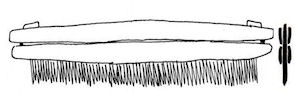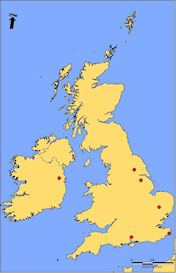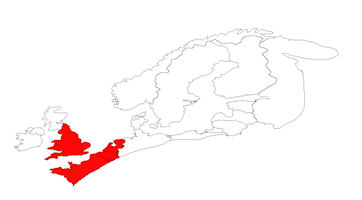
|  |
 |
 [Legend] |
 |

|  |
 |
 [Legend] |
 |
Type 1b single-sided combs are characterised by what we may term 'supernumerary' connecting plates. While most composite combs are constructed with a number of toothplates and a pair of connecting plates (the minimum required in order to ensure the physical integrity of the object), Type 1b combs feature three or four connecting plates. Most examples represent a high level of craftsmanship. Traditionally, a Frisian origin has been assumed for these combs, though Hills (1981) has cogently argued for an Anglo-Saxon genesis, and it is notable that, in terms of gross morphology and ornament, they do bear comparison with Type 1a, perhaps suggesting that they are part of a common developmental sequence. Type 1b itself dates to the period between the late 4th and 8th centuries (MacGregor 1985, 85-7), though is subject to a certain degree of internal variation over this extended period.
The comments facility has now been turned off.
© Internet Archaeology/Author(s)
University of York legal statements | Terms and Conditions
| File last updated: Tue Sep 20 2011